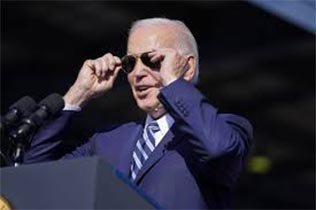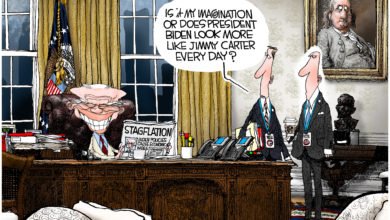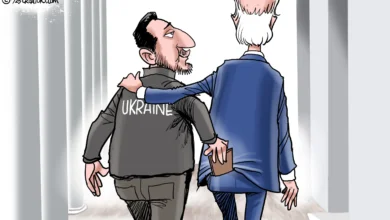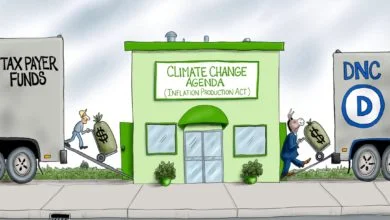Teachers Unions Politicized US Schools, Not Parents
When voters were asked by Pew Research, prior to the 2020 election, what issues were most important to them, education wasn’t even among the top dozen.
But things have changed dramatically since then. Outlets ranging from The Washington Post, to ABC News, have identified education as a potentially significant factor in the 2022 midterms. Additionally, after education emerged as a defining issue in Virginia’s gubernatorial election last year — ranking as a top two or three issue — school choice became a litmus test issue for Republicans.
This is quite the swing in just two years.
Theoretically, education should not really be a political issue; but, as we have seen, it clearly has become one. Therefore, we must ask why exactly this has happened.
There are many possible answers to this question. One of them came from Randi Weingarten, president of the American Federation of Teachers — the second largest teachers union in the country. In a recent tweet, she blamed “extremists” who are “attacking teachers” and focusing on a culture war that is “intended to undermine teaching and learning.”
“The culture wars are intended to undermine teaching and learning,” Weingarten wrote. “Extremists are politicizing schools and attacking teachers. Attacking teachers doesn’t help kids, it undermines everything.”
If that was not clear enough, she also linked to a news article where she gets a bit more specific about the kinds of people she is talking about: “the anti-public schools crowd, the anti-union crowd, the privatizers, the haters.” In other words, she is referring to the conservatives, libertarians, liberals who believe in school choice, and even parents themselves.
But are these groups really the ones politicizing education? Or, alternatively, are they simply responding to the overtly political forces that have controlled education for a long time?
Why Education Has Become so Politicized
The 2020-2021 school year should be seen as critical when considering the politicization of education. Two events occurred in the months preceding that school year that led to the extreme stances that eventually launched schools into the political limelight: the Covid-19 pandemic and the police murder of George Floyd. The former was taken advantage of by teachers’ unions with backward incentives, while the latter led to a nationwide racial reckoning that some took so far as to actually begin promoting regressive racial ideologies in the name of progress.
First, when the Covid-19 pandemic began, there was understandably a lot of uncertainty. But one of the first things that was known about the virus was that kids were the least vulnerable to severe infection. We also soon found out that schools were not a hotspot of Covid transmission. Yet, many K-12 schools started the 2020-2021 school year online — largely due to cynical activism by teachers’ unions. Prior to the school year, Weingarten threatened a strike, stating that “nothing is off the table” if school districts decided to reopen, and the Chicago Teachers Union tweeted later that the push to reopen school was “rooted in sexism, racism and misogyny.” It is reasonable to point out that this is just rhetoric — not necessarily representative of what actual power the unions have to shape policy — but studies demonstrated that the strength of a district’s union, not the prevalence of Covid-19 in the community, was the best predictor of prolonged school closures.
More recently, the effects of these closures — caused by the exploitation of a crisis by public sector unions — have become clear. A study released by McKinsey & Company found that “by the end of the 2020-21 school year, students were on average five months behind in math and four months behind in reading.” The learning loss was even more severe among low-income students, as well as black and Hispanic students. Numerous studies — including the CDC’s own research — also show that the closures damaged students’ mental health, with rates of anxiety and depression rising.
Second, following our nation’s racial reckoning beginning in the summer of 2020, some schools began to include radical — regressive, even — teachings on race in their curriculum. Activist Chris Rufo has done deep reporting on this issue for City Journal, exposing example after example of racial essentialist messages surrounding race making their way into K-12 classrooms. Moreover, looking to spread this kind of instruction further, the National Education Association, which is the largest teachers union in the country, passed a resolution that explicitly endorsed the teaching of critical race theory in the classroom as a tool to understand America. And the American Federation of Teachers, which is the second largest teachers union in the country, announced a campaign to bring the writings of Ibram X. Kendi — a scholar who has written that “The only remedy to past discrimination is present discrimination. The only remedy to present discrimination is future discrimination.” — into every single classroom.
In response to perpetual school closures driven by union power, as well as racially divisive curricula making its way into K-12 schools, a coalition of conservatives, libertarians, and liberals mobilized against such policies.
Parents showed up to school board meetings, politicians passed legislation, and heterodox news outlets reported on what was happening. So many people have left the traditional public school system recently that it is being referred to by some as an ”exodus” of sorts. This is the response that Weingarten is blaming for the politicization of schools. However, it should be noted that all of this came after both radical and unprecedented policies were implemented. So, while one may criticize aspects of the response — after all, I do not agree with every law passed or with every speech given by a parent at a school board meeting — it stretches credulity to claim that parents politicized schools when in fact it was the schools themselves, in tandem with the unions, who introduced these radical political elements.
The End of Government’s Monopoly?
Data show that more and more people are looking for alternatives to the traditional public school system. Earlier this year, PBS published a piece exploring the surge in homeschooling across the country.
“In 18 states that shared data through the current school year, the number of homeschooling students increased by 63% in the 2020-2021 school year, then fell by only 17% in the 2021-2022 school year,” wrote the Associated Press’ Carolyn Thompson.
The article tells the stories of multiple parents who started to homeschool their children over the past year, and they find that a common reason is that they were simply unimpressed by the quality of the instruction during school closures. Apart from homeschooling, the National Alliance for Public Charter Schools reported that enrollment went up by seven percent during the pandemic.
The reason is clear: the traditional public school system has been riddled with failures for a long time, but events over the past few years made people more aware of them. And these failures do not just exist in the heads of parents, conservative ideologues or school choice activists, as Weingarten suggests. They are very real. Parents want their kids to attend school in person, and they generally don’t want their kids to be indoctrinated into a particular ideological system by strangers who work for the government. According to the American Federation of Teachers’ own poll, 60 percent of likely voters in battleground states are dissatisfied with the way traditional public schools are teaching about race and 58 percent are dissatisfied with how they are teaching about issues related to gender identity.
People vote with their feet; so, as more and more people leave the traditional public school system, it will become more and more clear that something fundamental needs to change in the way the U.S. handles education policy.
The reason something fundamental must change is that the failures we are seeing do not just happen by chance; rather, they are the natural byproduct of a government monopoly on education coupled with power in the hands of a public sector union. Therefore, any real reform to the education system must address these two things.
First, it is generally understood that monopolies are bad for consumers. They lead to higher prices, along with lower quality and quantity. Figuring out why this happens isn’t difficult: firms have no incentive to innovate, nor provide a high-quality product, when consumers have no other options. The economist Thomas Sowell was correct when he observed that education is truly an outlier when it comes to how it is treated, as traditional public schools — as opposed to a grocery store or a summer camp — do not have to convince anyone that attending them is in their best interest. People are simply forced to attend. However, moving to a model that is characterized by choice will 1) empower families to choose a school that best fits the needs of their individual children and 2) incentivize every school, including traditional public schools, to prioritize the quality of the education they are providing and to continually improve. After all, if they do not, then people will simply decide to attend elsewhere.
Second, the job of a union is to protect, and accrue benefits for, its members. This can clearly be a worthwhile goal; but, when it comes to public sector teachers’ unions, the problems arise when advocating for the interests of teachers means advocating against the interests of students. The truth is that what is best for students is not always best for teachers, and vice versa.
For example, when Covid-19 school closures were being considered, it was clearly in the interest of students to learn in an in-person environment; however, teachers’ unions advocated against opening schools because their job is to look out for the comfort and safety of members. Another example is when a teacher’s job performance is egregiously sub-par. In such a scenario, it is clearly in the interest of students for that teacher to be removed, while it is in the interest of the teacher and the union to retain the teacher’s job. This is why in New York City it takes an average of 830 days and $313,000 to fire a single incompetent teacher.
A successful educational system cannot include cornerstones that, due to their very nature, work to the detriment of children. The good news is that by enacting policies that advance school choice, the power of teachers’ unions to advocate backward policy will weaken for two reasons. First, if that policy is detrimental enough, it may encourage students to leave for a school that puts students’ needs first; this could certainly cause the unions to begin to tread a bit lighter in their advocacy. Second, most charter schools and private schools are not unionized, which means that more students will be learning in schools that are not unionized after there is school choice if unionized schools fail to provide the education consumers want.
Steven Levitt, who co-authored the bestselling book, Freakonomics, explained the current problem with schools aptly. He wrote that “the problem (…) is not too many incentives but too few.” Right now, the schools and the teachers can really just “do whatever they want” in the classroom, regardless of what is best for students, because political forces are protecting the government’s education monopoly and the power of the unions to influence policy. In other words, because there is no competition, there can be no accountability.
This is clearly correct. And so the only solution is greater educational freedom. More people recognize this than ever before, but the work is only just getting started.
Content syndicated from Fee.org (FEE) under Creative Commons license.
Agree/Disagree with the author(s)? Let them know in the comments below and be heard by 10’s of thousands of CDN readers each day!




